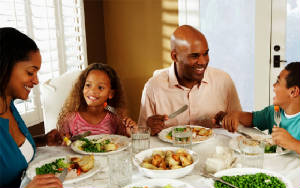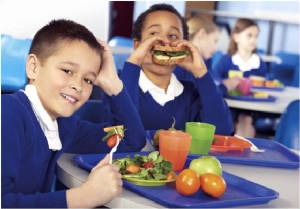`The following foods can help a child healthfully gain weight and thrive:
• Beneficial fats, especially plant-based
fats. Each gram of fat has about 9 calories while each gram of protein or carbohydrate provides about 4 calories, so a meal
made with fats can contribute to wanted weight gain. Here are some recommended sources of healthful fat:
- Flaxseed oil. Add to it everything! Flaxseed oil has a mild flavor, so it will go unnoticed
if mixed into a smoothie, drizzled onto popcorn or tossed with vegetables.
- Coconut oil. Coconut oil adds sweetness and beneficial calories, so add a tablespoon into a smoothie or to vegetables
when roasting.
- Nuts and seeds. Pistachios, walnuts and almonds
are great choices for kids.
- Avocados. Make guacamole with fresh avocados,
onions and tomatoes, or mix avocado into a fruit smoothie.
-
Olives are about 80-85 percent healthful fat, and because of their high amounts of antioxidants and phytonutrients (a beneficial
plant compound), they have been shown to help prevent disease.
-
Full-fat dairy has more calories and fat than the reduced-fat varieties yet a comparable amount of nutrients. We buy only
full-fat dairy at our house, because everyone needs beneficial
fats.
• Smoothies. Smoothies are an easy way to ingest needed nutrients
and calories, especially if you add coconut oil, coconut milk or almond butter. Get creative with your favorite fruit, full-fat
yogurt, nut butters and seeds.
•
Grate cooked eggs into salads, sauces, and soups.
• Cook pasta, rice and whole grains in chicken broth, adding extra nutrition and a few extra
calories.
• Dried fruit lacks
water, making it easier to eat more sizable quantities. This means a greater calorie intake.
• Make granola with nuts, seeds, dried fruit and
coconut oil, then mix with full-fat Greek yogurt.
• Make trail mix with your choice of nuts, seeds and dried fruit.
• Hummus and bean dips make good snacks.
• Grated, frozen chicken liver provides children with
essential nutrients such as protein, Vitamin A, all the B vitamins and iron. It doesn’t greatly affect flavor when frozen
and grated into food. My kids have never even noticed!
Behavior and routine
• Drink after a meal, not during. Even water can fill up a little belly, tricking
a child into feeling full.
Milk
and juice are more often the culprit as many toddlers and preschoolers drink so much throughout the day that they aren’t
hungry enough for food at mealtime.
•
Set meal and snack times. Kids need to know that mealtime is an important and expected part of their day.
Eating in the stroller or car conveys to your
children that eating well is not a priority. Snack foods that parents can keep in the car are also often lower-nutrient foods.
• Sit down to meals with your children. They
will eat more healthful foods if they see healthful eating modeled.
• Turn off the TV. Older children and adults tend to mindlessly eat in front of
the television, but many young kids will be too captivated by the screen to eat at all.
• This might sound counterintuitive, but make sure your child is getting
enough exercise. Yes, exercise burns calories, but it also ensures a child is hungry enough to eat well.
• Provide healthful snacks in between meals. Children’s
stomachs are small, so they cannot always eat enough food during their meals to meet their nutritional needs.
Snacks also sustain a young child’s energy
and mood.
• Add a snack before
bedtime. If the snack is full of healthful fat and protein, the nutrients can build tissue while sleeping.
Avoid sugar so a child’s ability to sleep
is not affected.
Keep in mind
that this approach to eating works for most kids, not just those who need to put on a few extra pounds.
For a recipe that is full of healthful calories, try these
energy balls.
My children’s
friends often walk into our house and immediately ask whether I have any in the fridge or freezer; in other words, they are
a crowd pleaser, and a nutrient-rich one.
Energy
Balls
Makes about 40 balls
The balls can be eaten right away, but their texture
improves after several hours in the refrigerator. They can be stored in an airtight container and refrigerated for 7 to 10
days or frozen for up to 3 months.
Ingredients
1 cup peanut butter, sunflower butter or almond butter
1 cup raw or regular honey (start with less if regular honey
and add more if needed)
3 cups rolled
oats
1/2 cup ground chia seed or flaxseed
1 cup mini chocolate chips or cacao nibs
1 cup any combination of nuts, seeds and soft
dried fruit, such as sunflower seeds, raisins and dried cranberries
Sweetened shredded coconut, for rolling (optional)
Steps
Combine the nut butter and honey in a large mixing bowl and stir until smooth.
Gradually add the oats and chia seed or flaxseed. Add the cacao nibs or chocolate chips and the nut-seed-fruit mixture, and
mix gently to combine.
Use your hands
to roll the mixture into balls approximately the size of ping-pong balls. If desired, roll them in shredded coconut.
Place
the balls in paper mini-muffin cups. At this point, you can eat them, but they’ll be less sticky after a night in the
refrigerator. Layer the balls in an airtight container, using wax paper to separate the layers, and refrigerate for 7 to 10
days or freeze for up to 3 months.
NUTRITION | Per ball (using equal amounts of sunflower seeds, raisins
and dried cranberries) : 130 calories, 3 g protein, 18 g carbohydrates, 6 g fat, 2 g saturated fat, 0 mg cholesterol,
0 mg sodium, 2 g dietary fiber, 12 g sugar
Susan Peacock M.S.R.D.
561-758-1734
Overweight
One in 3 children are obese in our country, making it a national epidemic. This puts them at risk for serious health problems. If your child is overweight, please
see the following suggestions.
Making small changes in your child’s eating habits will
help them loose weight and stay healthy.
Encourage healthy eating habits. Eat together at a table at least once a day. Shut off electronics while eating.

There's no great secret to healthy eating. To help your children and family develop
healthy eating habits:
• Provide plenty
of vegetables, fruits, and whole-grain products.
• Have carrot sticks and fresh fruit washed and easily accessible for your children. (Put on a shelf in the fridge they can reach).
• Include low-fat or non-fat milk or dairy products.
• Choose lean meats, poultry, fish, lentils, and beans for protein.
• Serve reasonably sized portions.
• Encourage your family to drink lots of water. Remove soda from your grocery list. Reduce juice servings.
• Have a visit to a Fast Food restaurant be a once a month event.
• Limit sugar-sweetened beverages. Read
labels. Even if it says “no sugar added” it may have plenty of sugar. Grams of sugar on the label divided by 4
= teaspoons of sugar.
• Limit consumption of sugar and saturated fat.
Remember
that small changes every day can lead to a recipe for success!
For more information
about nutrition, visit ChooseMyPlate.gov and the Dietary Guidelines for Americans
2010.

Remove calorie-rich temptations!
Although everything can be enjoyed in moderation, reducing the calorie-rich temptations of high-fat and high-sugar,
or salty snacks can also help your children develop healthy eating habits.
Instead only allow your children to eat them sometimes,
so that they truly will be treats!
Here are examples of easy-to-prepare, low-fat and low-sugar treats that are 100
calories or less:
• A medium-size
apple
• A medium-size banana
• 1 cup blueberries
• 1 cup grapes
1-cup carrots,
broccoli, or bell peppers with 2 tbsp. hummus.
Get out and play with your children. A walk afterschool or
a visit to the park should be a regular event.
Susan
Peacock M.S.R.D.
561-758-1734